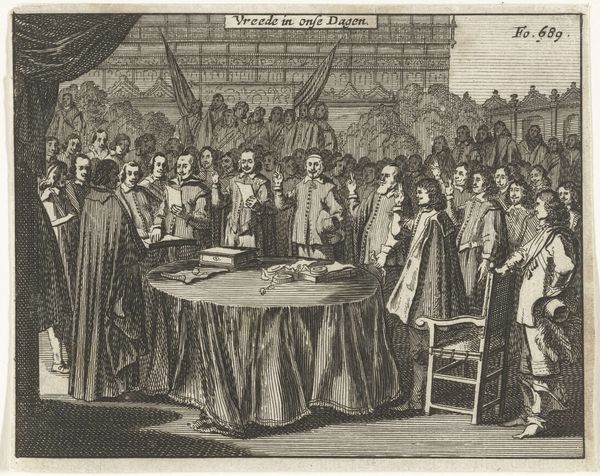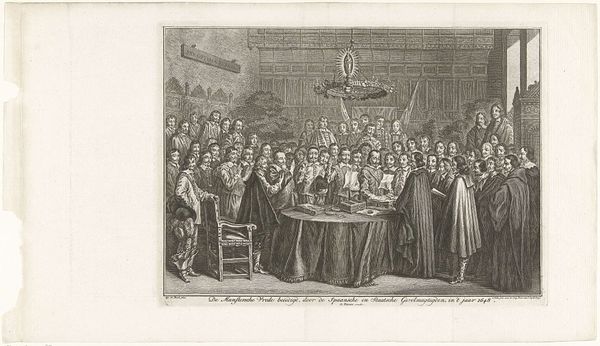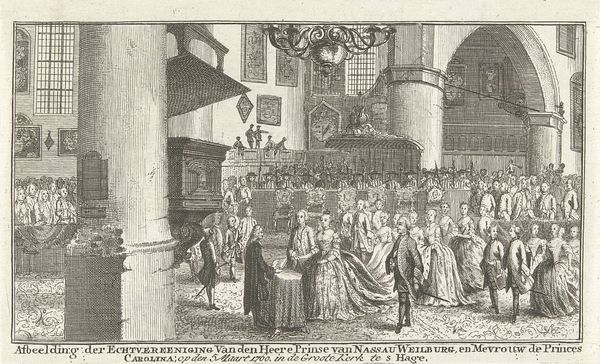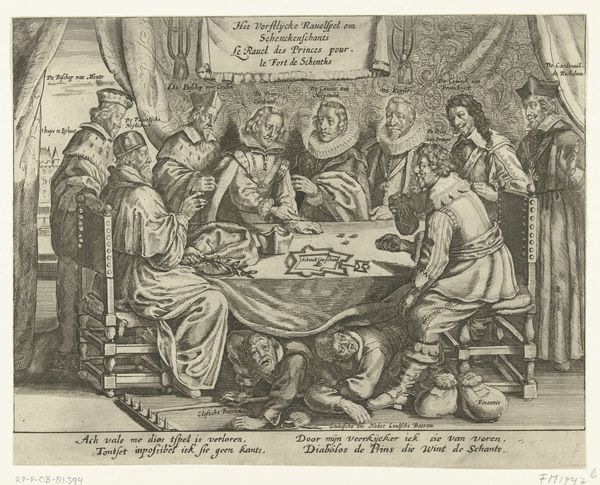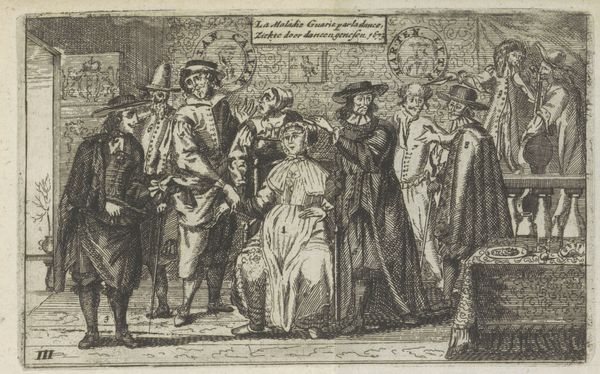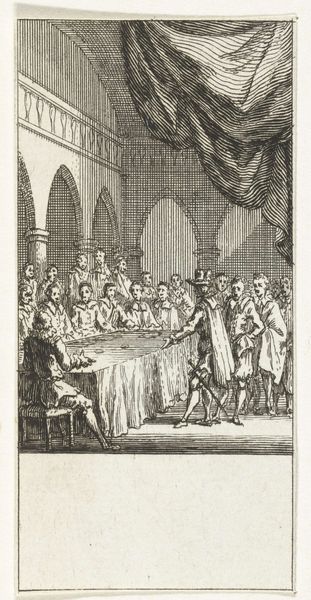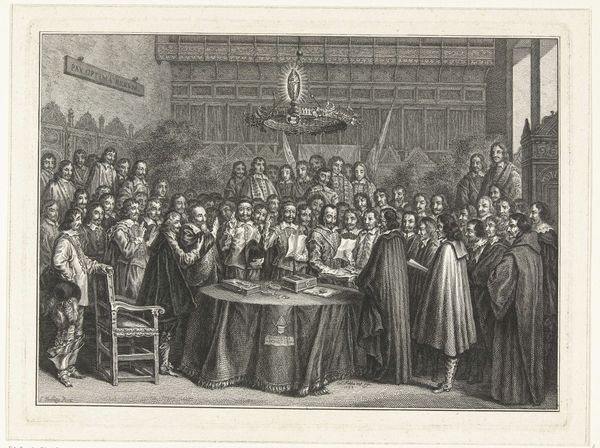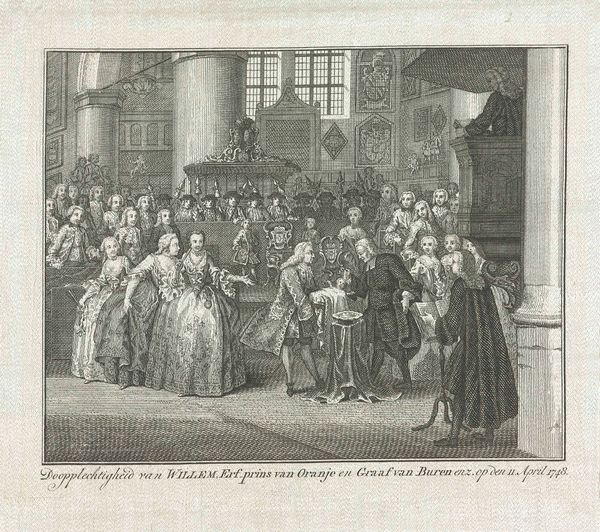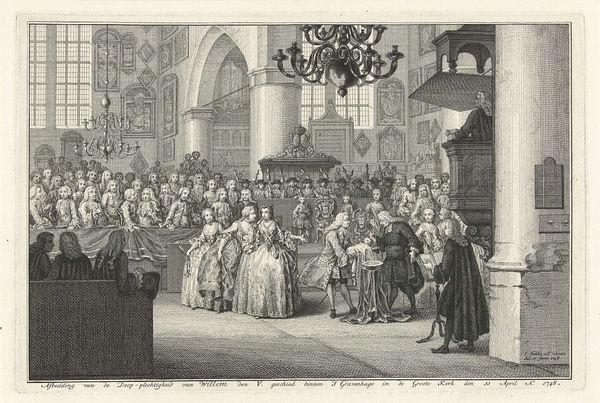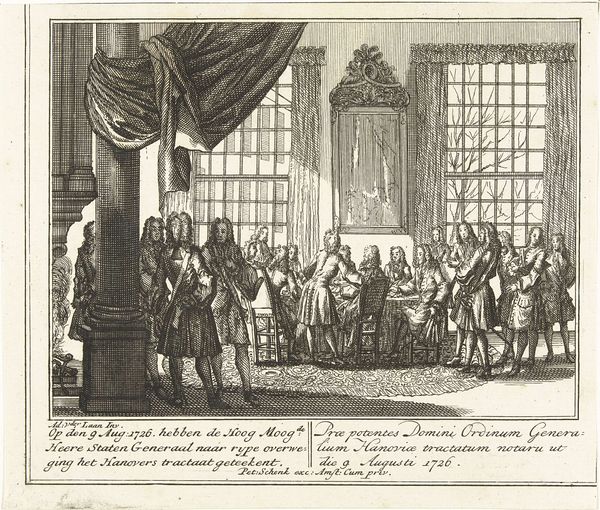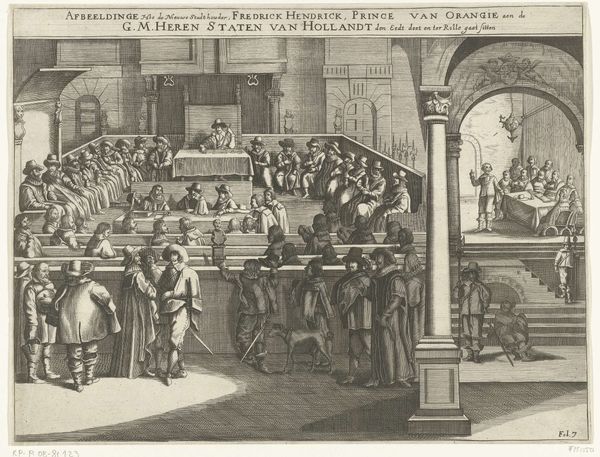
print, engraving
#
narrative-art
#
baroque
# print
#
figuration
#
group-portraits
#
line
#
history-painting
#
engraving
#
realism
Dimensions: height 102 mm, width 131 mm
Copyright: Rijks Museum: Open Domain
Editor: So, here we have "The Peace of Münster, 1648," an engraving, made sometime between 1650 and 1652. What immediately strikes me is the density of the figures; it feels very staged, a real performance of power. What do you make of this scene? Curator: The performance is precisely the point. This print serves as a powerful piece of political communication. Think of how fragile peace was at that time. The print depicts the signing of the treaty ending the Eighty Years' War, but its role extended far beyond simple documentation. It shaped public perception of the event. Editor: In what way? I mean, wouldn't people just accept that the war was over? Curator: It's more complex than that. Consider the social context. Peace needed to be *seen* to be happening. This print, through its dissemination, solidifies the image of powerful men coming together, guaranteeing stability. How do you think the act of commissioning and distributing a print like this further solidified power structures of the time? Editor: That's fascinating. So, it's less about a factual account, and more about crafting a particular narrative, right? Maybe even convincing people that these guys were doing a good job! Curator: Exactly. Think of it as visual propaganda, aiming to solidify public support. Furthermore, prints at this time were reproduced and distributed widely, acting almost like the newspapers of today. They shaped public sentiment on a massive scale. Editor: Wow, that completely reframes how I see this. It’s not just a historical record; it’s an active player in the history it depicts. Thank you for shining a light on it. Curator: The artwork now serves not as art itself but as proof of social record and sentiment, allowing one to understand power through a clearer lens.
Comments
No comments
Be the first to comment and join the conversation on the ultimate creative platform.
